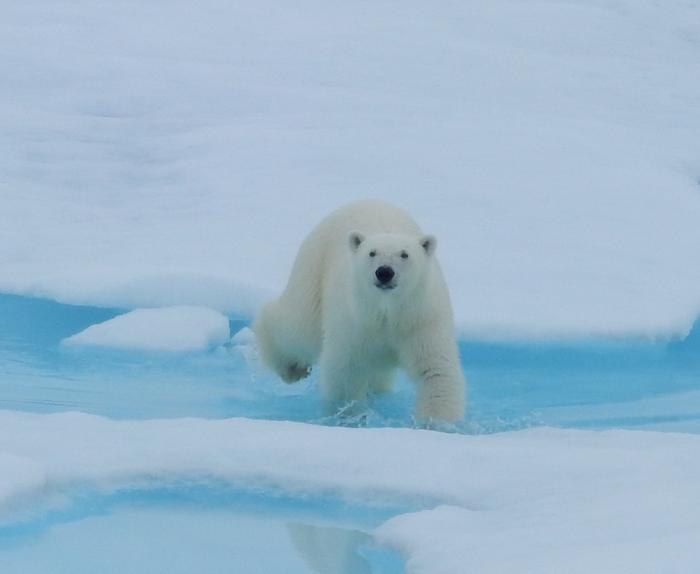
As the ship broke through the ice yesterday (26 September), we entered polar bear habitat (place where a species of animal, plant, or other living organism lives). At least three bears were spotted from the ship over the course of the day. I was lucky enough to watch one walk around on the ice for quite a while. It was too far away for me to get a good photo, but I was able to photograph some polar bear tracks on the sea ice. If you've never seen a polar bear before, you make think they look white. But in reality they have a more light yellow color. The sea ice and snow has a hint of blue-green to it, so the polar bears stand out against that background. At least to human eyes! Cameras can be a little trickier, but I'll keep trying.
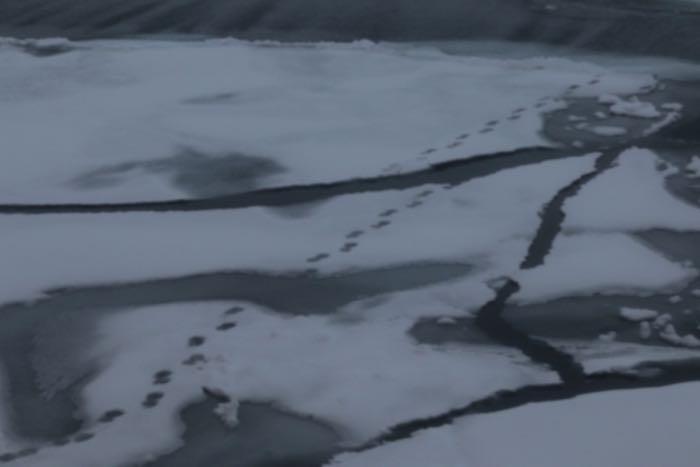
Polar bears are one thing that can make research on the sea ice dangerous and difficult. To help address this risk, there are multiple polar bear guards with this research expedition. These professional polar bear guards work with boat-based research projects like this. Many of them also work on land-based operations in Svalbard or elsewhere. While they often work with researchers, they also work with hiking groups, students, media, artists, and tourists.
So what exactly do polar bear guards do? Their primary job is to keep watch for polar bears. But this isn't just about looking for polar bears. When coming with a group to a new place, they think about the landscape. Which places are easy to see? Which places are more difficult to see? Are there certain directions a polar bear is more likely to come from in this particular place? In places with sea ice or white rocks, the polar bear guard also takes note of objects in the landscape that could be mistaken for polar bears. Knowing these objects will make their job easier later on. But they still keep an eye on these just in case it turns out it isn't a rock after all!
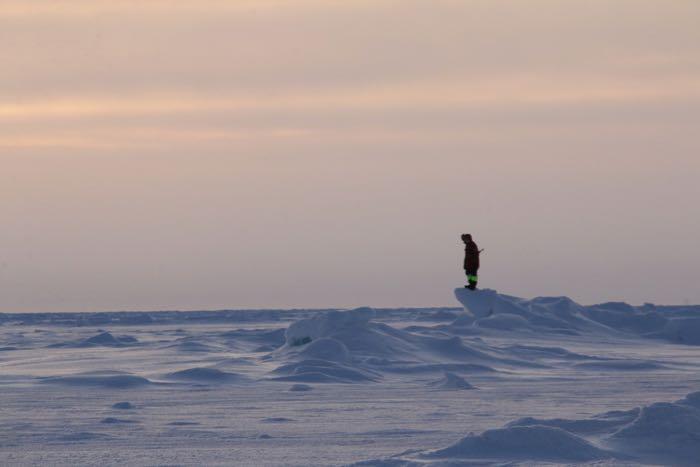
The polar bear guard tries to choose a spot where they have a good vantage point to look in all directions. Then they begin scanning with binoculars. They look for polar bears. And they look for polar bears. And they look for polar bears. Their job requires awareness of their surroundings. They are constantly scanning near and far for anything that could be a polar bear. They are also looking for small changes in the landscape. Did that 'piece of ice' just change shape?
Throughout all of this, a good polar bear guard is also thinking about what they will do if a polar bear arrives. How will they alert people? Where will they move people? What methods can they use to scare a polar bear away if it gets close? What do they define as close in this environment?
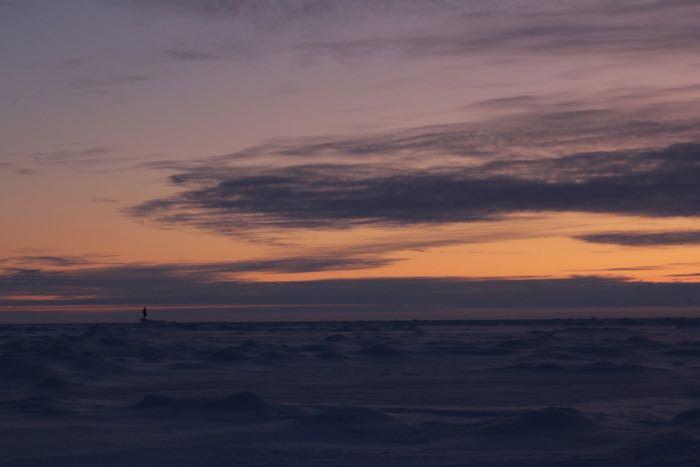
Working on the ice, we will be warned if a polar bear gets within 500 meters (1/4 of a mile) of our work site. If the polar bear gets closer than that, we will leave the field site and return to the ship until the polar bear leaves the area. If we cannot safely get back to the ship, then the polar bear guards will need some decisions about the best way to scare the polar bear away. Their goal is always to keep people safe and also protect the polar bear from harm as much as possible. When it gets dark out, their work gets harder. On the Fedorov, the polar bear guards communicate to the captain and cruise leader when they thought it is getting too dark to be able to see well enough to keep us safe. That is the final word. When they call it, we have to pack up what we are doing and head back aboard the ship.
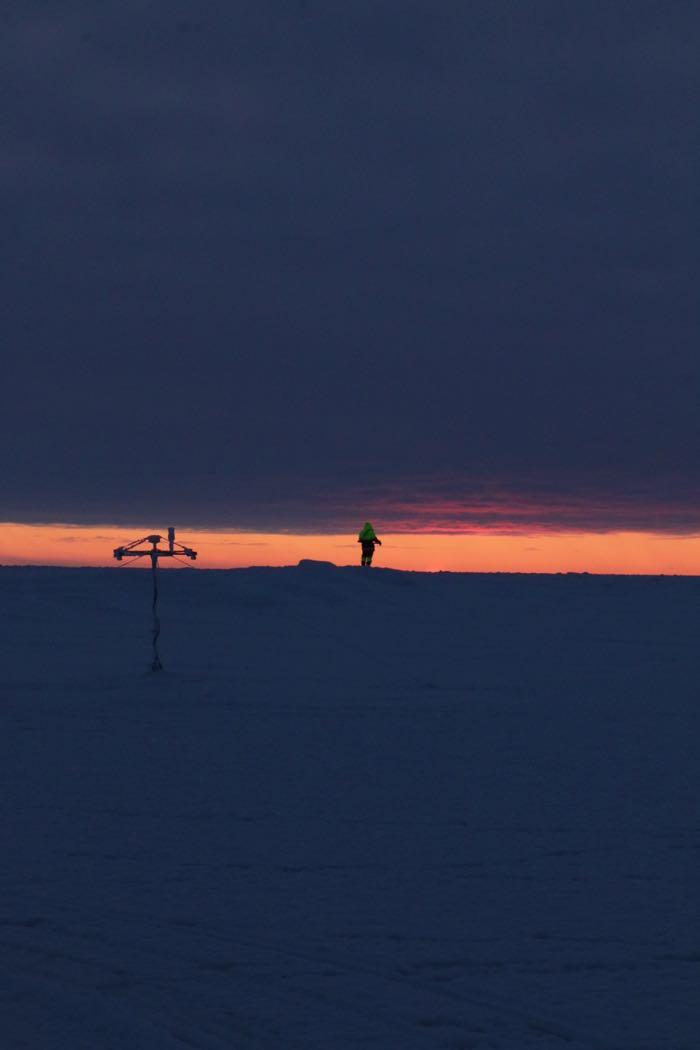
A good polar bear guard is not only watching for polar bears. The polar bear guard also keeps an eye on the science crew or other group to make sure everyone is doing okay. It is easy for people to get caught up in the work and forget to take care of themselves. Maybe they stop drinking water and get dehydrated. Maybe they are cold and begin to get frostbite or hypothermia. If a polar bear guard notices this, they can take a moment to check in with people and encourage them to drink some water, take a break to warm up out of the wind, put on more layers, eat a snack, or even leave the ice if necessary. That part sounds very familiar to my work as an outdoor science educator! Check out this article from E&E News for more insights from Trude Hohle, one of the incredible polar bear guards with the MOSAiC Expedition.
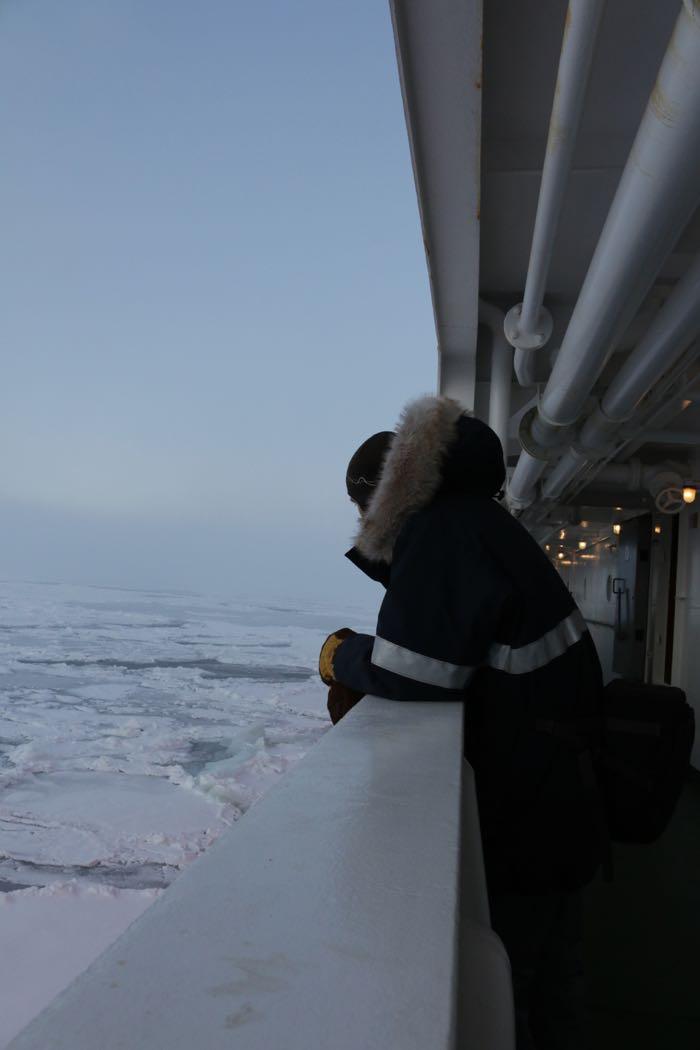
Polar bear guards are really knowledgeable. They are committed to their work. The ones on the Fedorov have incredible stories and insight about the Arctic. They are critical to successful research in the Arctic. Becoming a polar beard guard isn't the right path for many people. But it is one unique way to be part of important research in a changing Arctic. If you are a young person who enjoys being outside in beautiful, cold places, don't mind hard physical work, and are interested in building critical thinking skills and awareness of the environment around you -- maybe learning to be a polar bear guard is one possibility for you! If that isn't your cup of tea, there are lots of other science and boat-based roles that make the research possible.
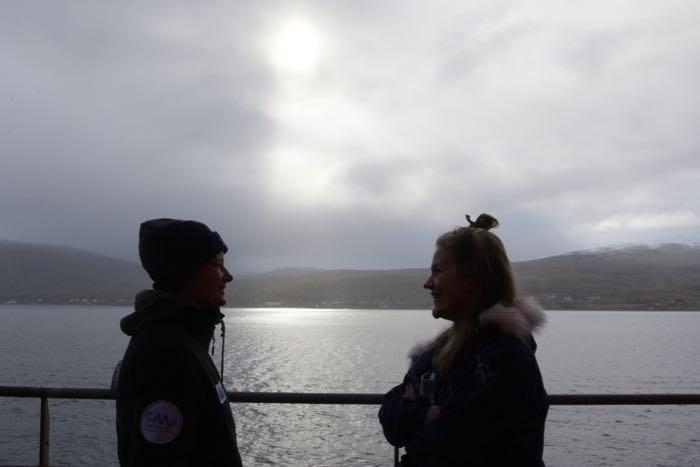
Word of the Day
Today's Russian word is tuman or fog. It has been very foggy all day today, with beautiful light softly illuminating the sea ice.
Education Extension
We've interviewed one of the polar bear guards about her job and I am currently working on an outdoor activity focused on polar bear guarding. This game-based activity will use the framework of being a polar bear guard to help students develop awareness of their surroundings and critical thinking skills. Check back here in a couple months for the activity outline!
In the meantime, there are a number of activities you can do with learners to build sensory awareness. A very simple one is to have everyone find a partner. On your signal, the partners turn away from each other. Partner A changes 5 small things about their appearance (take a hat off, tuck shirt in, roll pants up, etc.) Then the partners face each other Partner B tries to identify all 5 changes. Then you switch.
Another favorite game that focuses more on sound is called "Steal My Fire." The group makes a circle. Choose one person to be in the middle. They sit on the ground, with three short sticks or other similar items around them. When you are ready, blindfold this person. Then, on your silent signal, people from the outside of the circle try to walk silently forward, pick up one of the sticks, and return to the outside of the circle. If the person in the middle thinks someone is approaching to take the stick, they point in that direction. If they point directly at someone who is indeeded trying to take the stick, that person has to go back to the edge of the circle -- and return the stick if they've already managed to grab it. Continue playing until all 3 sticks have been taken or a time limit has expired (I suggest 5 minutes). Then switch who is in the middle. Have fun!


Comments